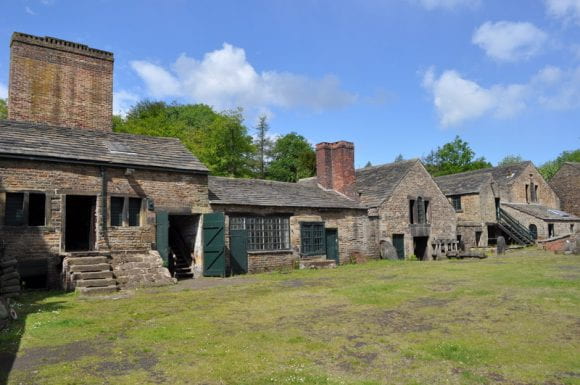
The Abbeydale Industrial Works was one of the largest water powered metal workshops on the river Sheave in Sheffield. There were workshops on this site from 1685. The site was famous for the steel scythes that were produced here from the late 18th century to its closure in 1933. Its steel furnaces were reopened during WW II. Today its is one of the sites of the Sheffield Industrial Museum Trust.
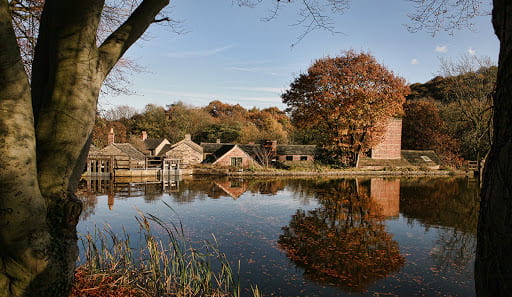
Abbeydale Industrial Museum from its for acre millpond.
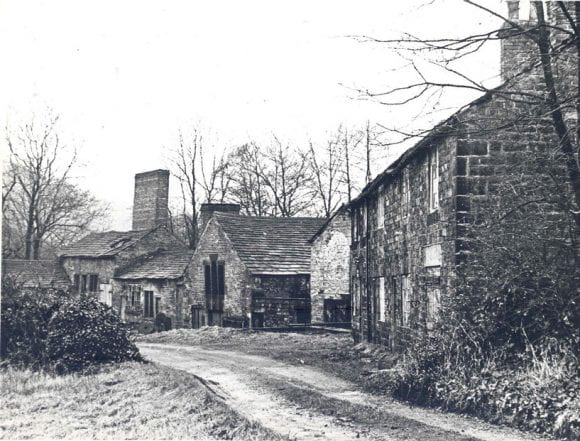
Historical view of the Abbeydale Works
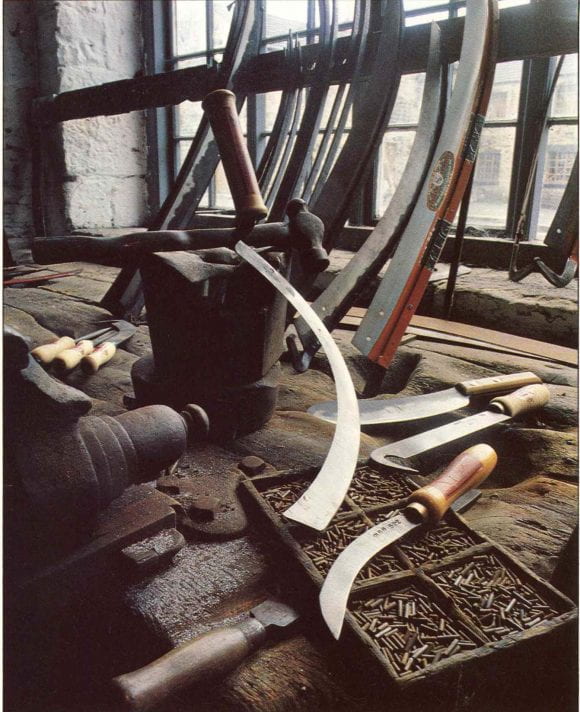
Steel products made at Abbeydale
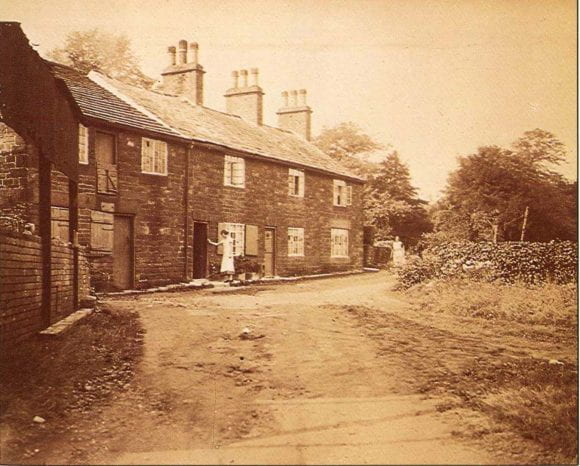
Historical view of Abbeydale’s worker cottages
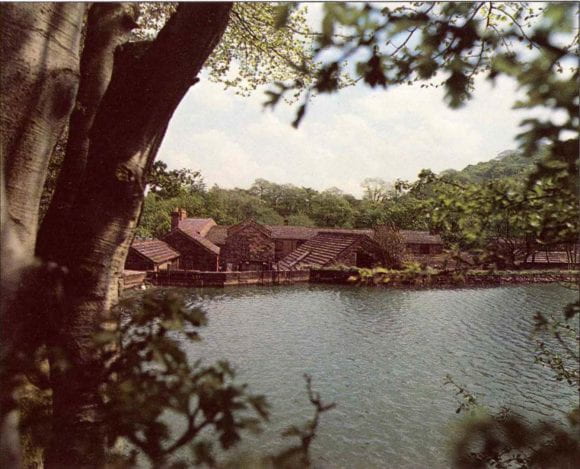
Millpond
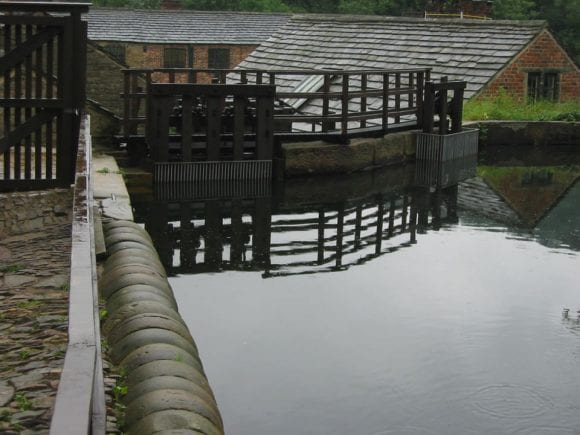
Millpond
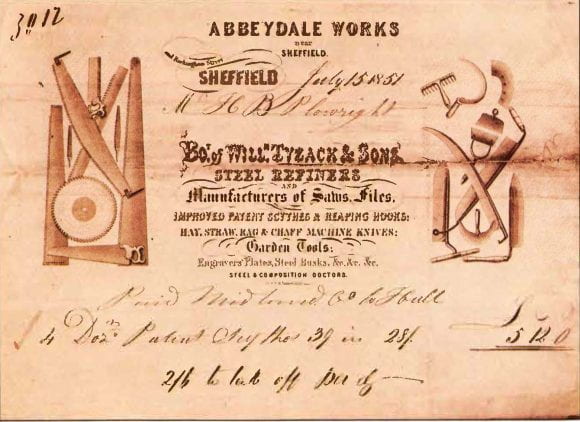
Abbeydale Works, 1851
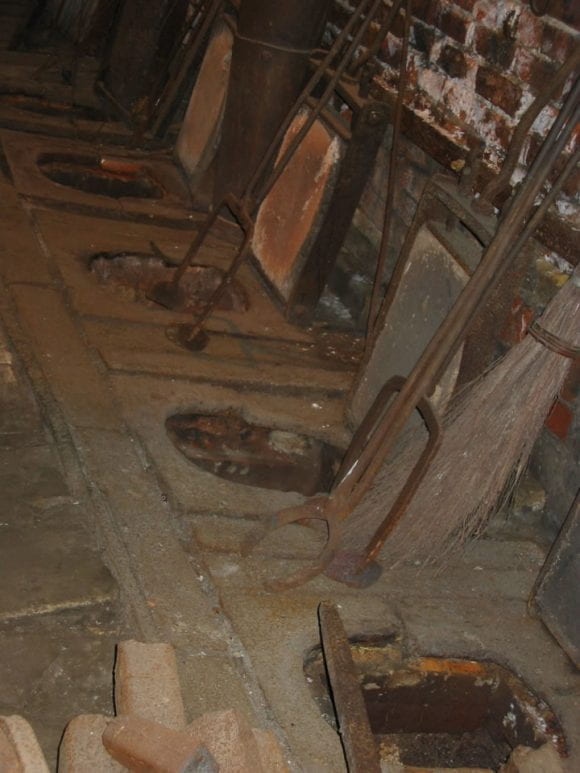
Cruciblele steel furnace
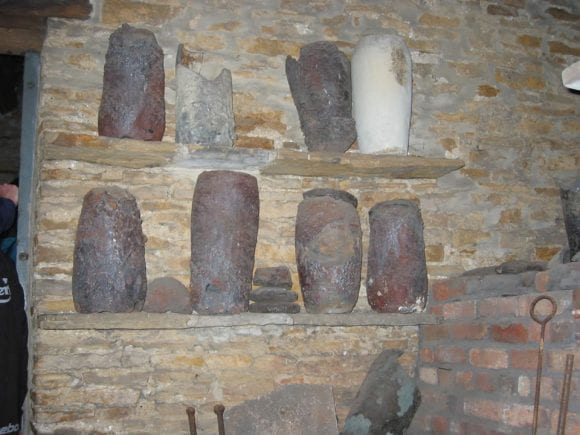
Clay is used for making crucible steel
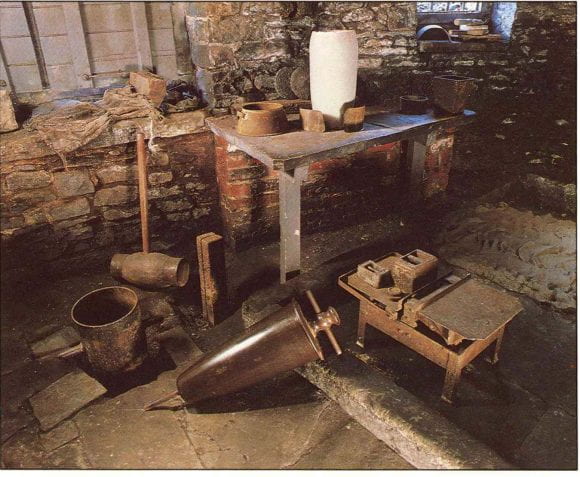
Pot sho. Crucible steel was invented by Benjamin Hunt in 1785. It was made in clay pots from blister steel made from Swedish iron bars.
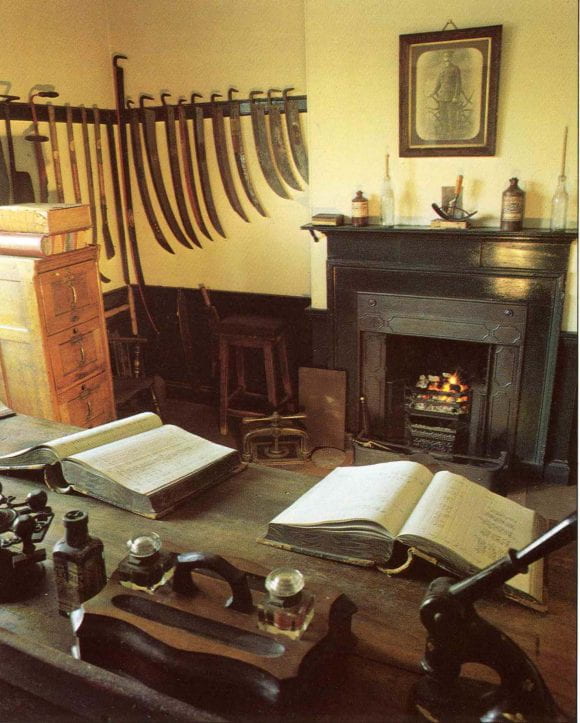
Counting House
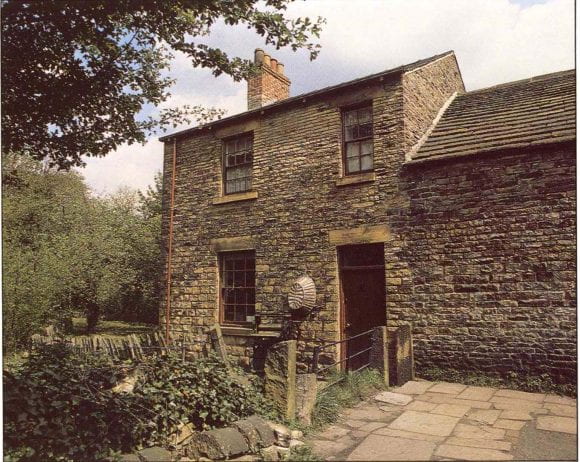
Manager’s House
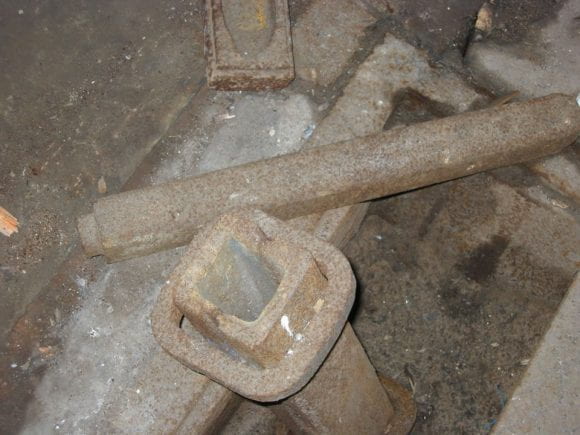
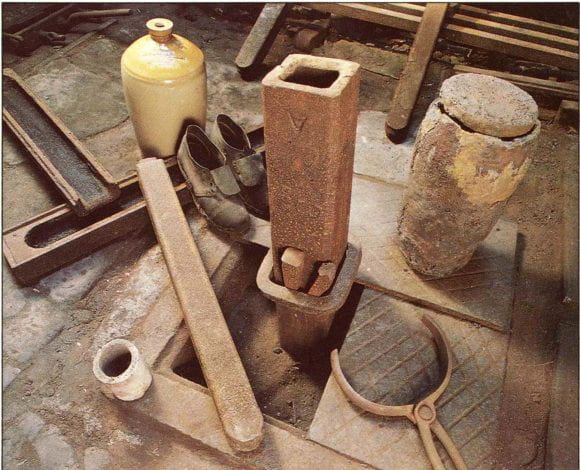
The molten crucible steel was poured into a mould to make a steel ingot.
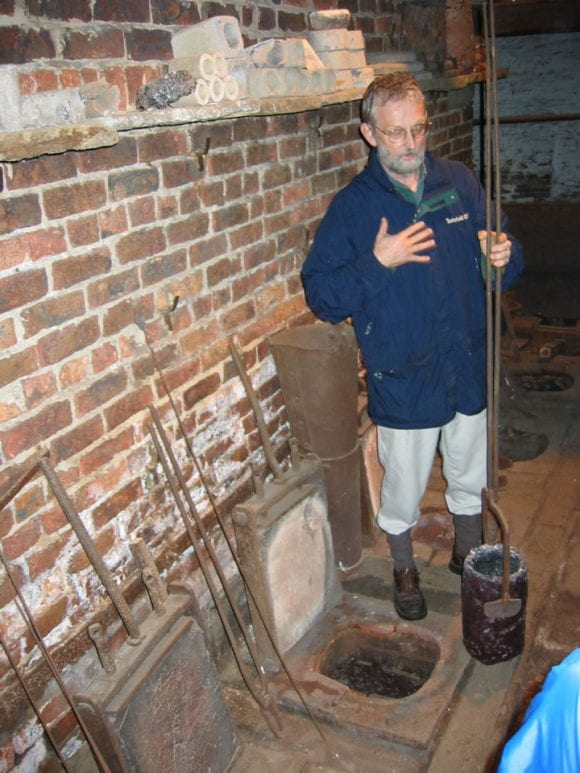
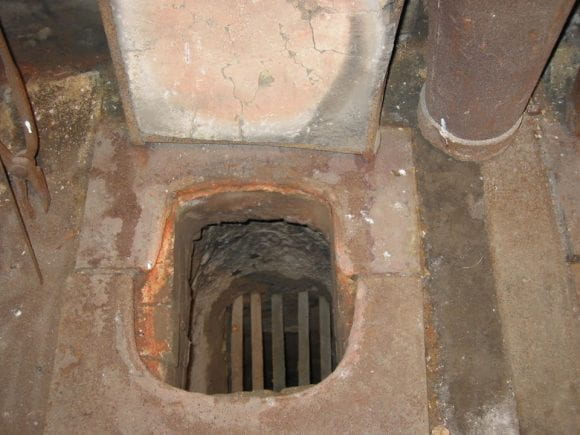
Crucible Steel Furnace
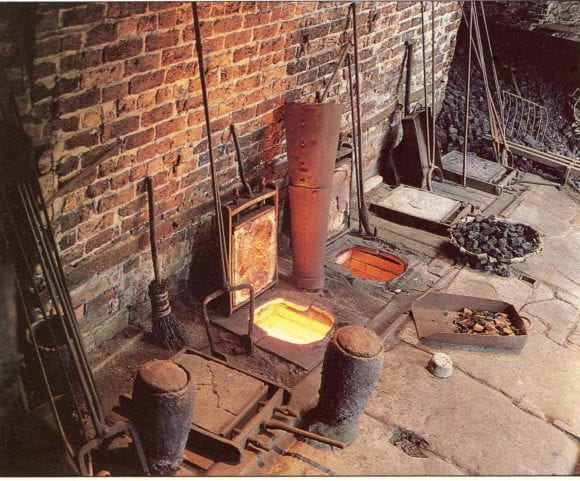
Crucible Steel Furnace
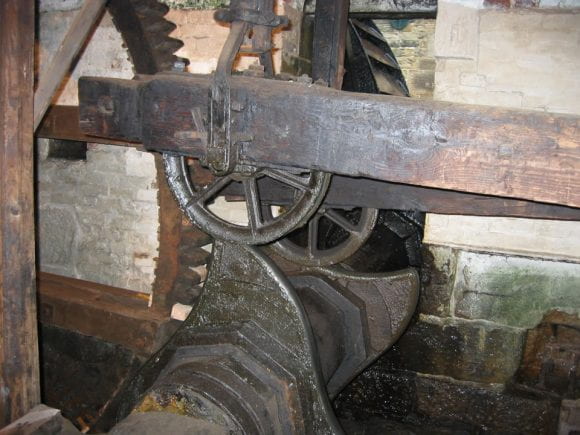
Tilt hammer mechanism

Tilt hammer mechanism.
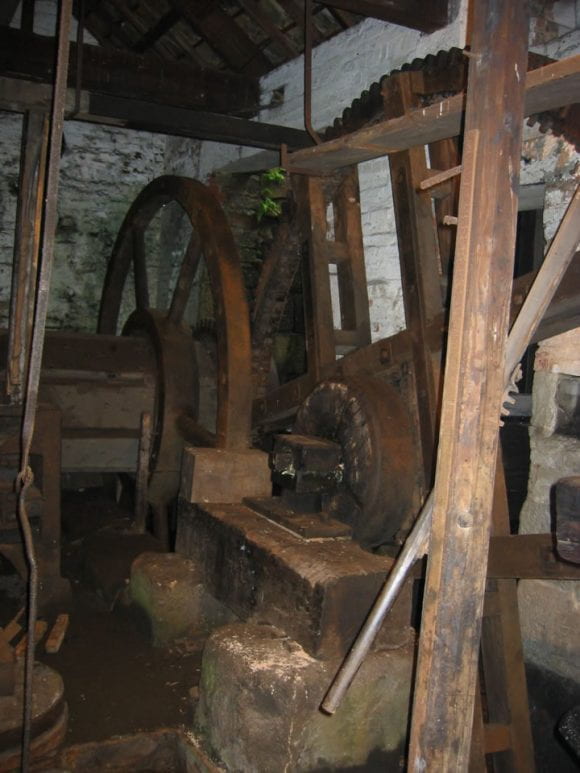
Tilt hammer mechanism
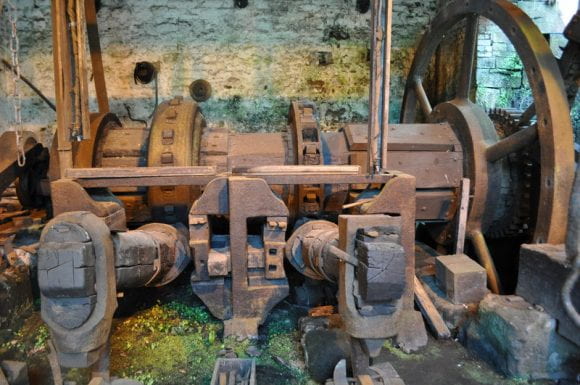
Tilt hammer

Crown scythes were made by forge-welding a piece of crucible steel between two pieces of wrought iron under the tilt hammers powered by a water wheel.
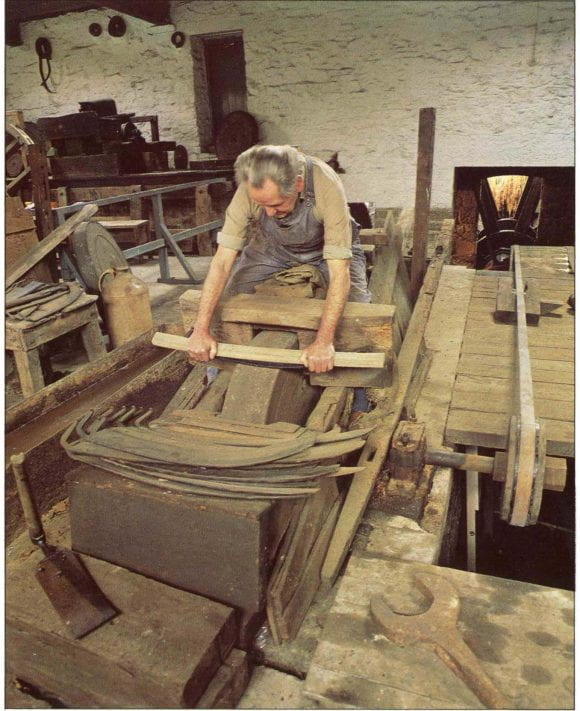
Scythe blade grinding hull. There were originally six grinding hulls at Abbeydale. They were powered by a second water wheel.
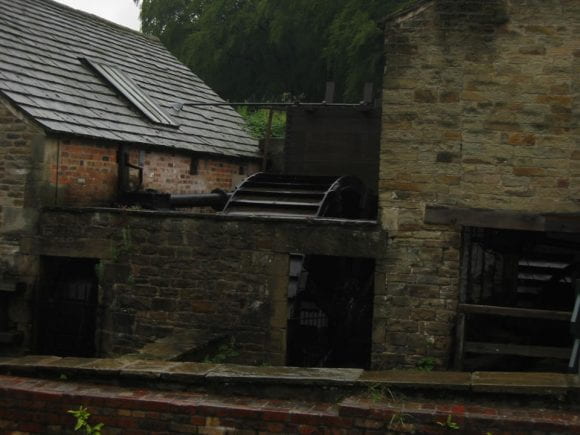
Waterwheel for the workshop
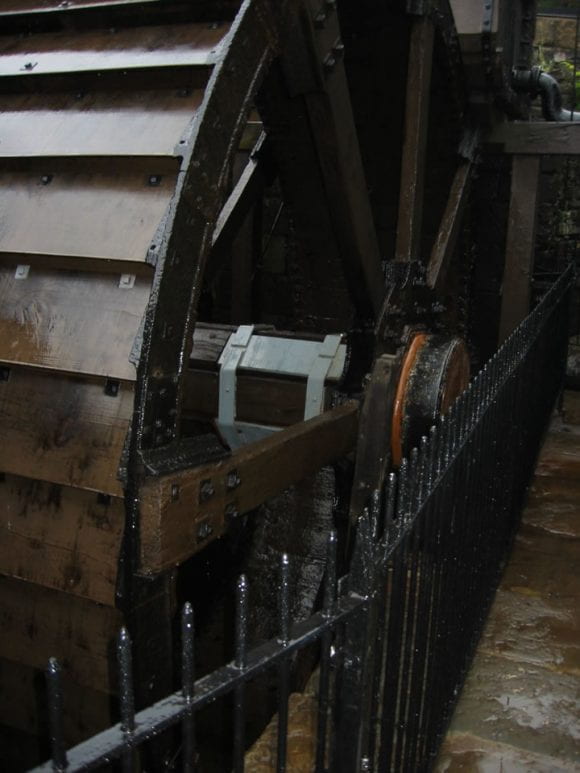
Overshot water wheel
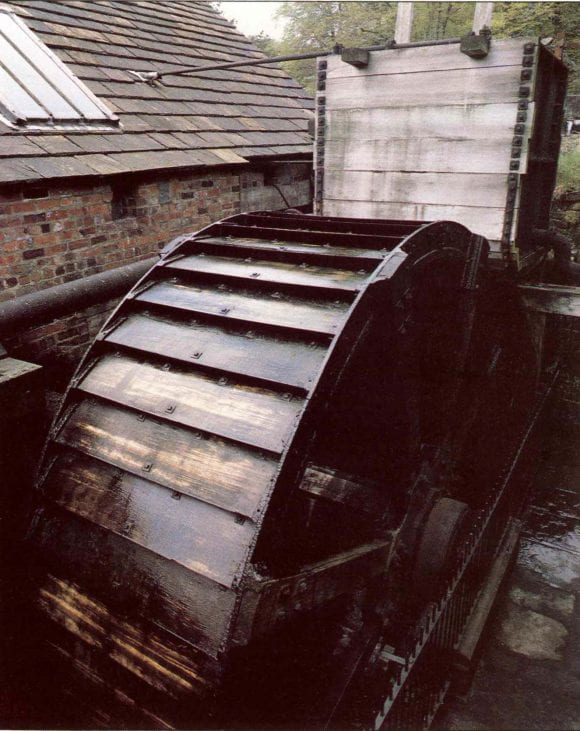
The tilt hammers, blowing engine, rhinestones and boring machinery were all driven by water-wheels. This is a back-shot breast wheel, 18 ft in diameter and 4 and a half ft wide. Water was fed to the wheel from the dam by a Wooden pentrough that controls the flow of water. A six ft head of water is required to move the tilt machinery, which weighed 23 tons when in motion. The wheel also supplies power to the blowing engine and the boring shop.
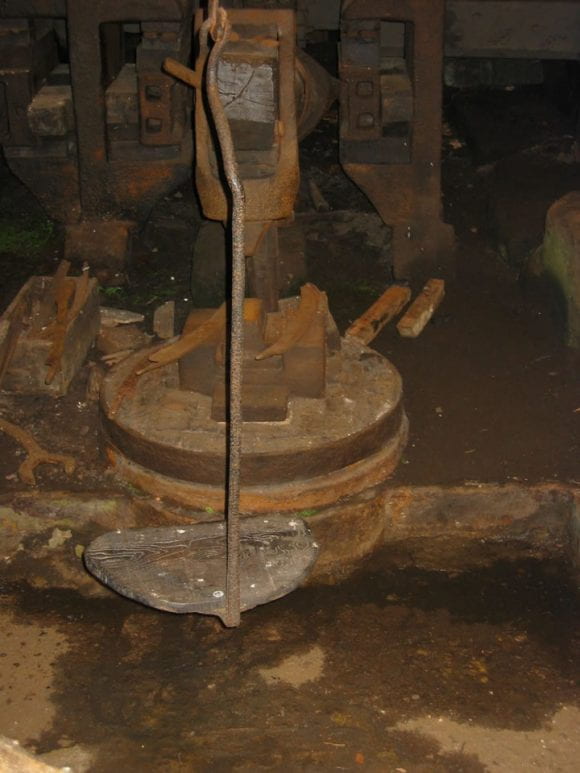
The tilt hammer seat was used by the forge-welder

A steam engine was installed in 1855. It was used when there was not enough water to power the water wheels.

Blacking shop. Scythes were painted to prevent rust.
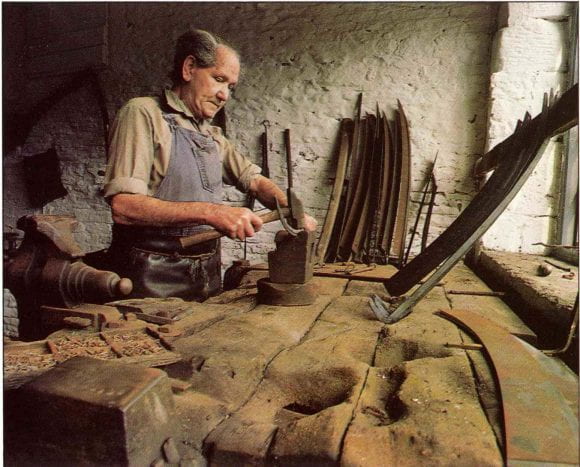
Fitting shop
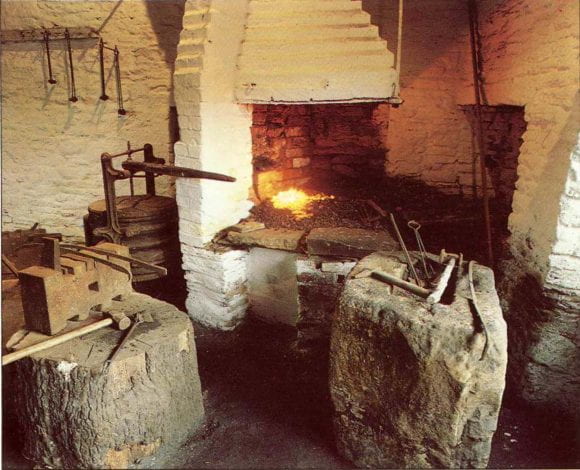
In 1791 Abraham Hill, a Sheffield saw maker, patented a method of making a steel scythe blade and its iron back separately and riveting them together instead of being forge-welded. These scythes were lighter and cheaper than the crown scythes. They were not as durable but they could be mass-produced easily. They were originally produced in small forges such as this one.

Grinding hull seat
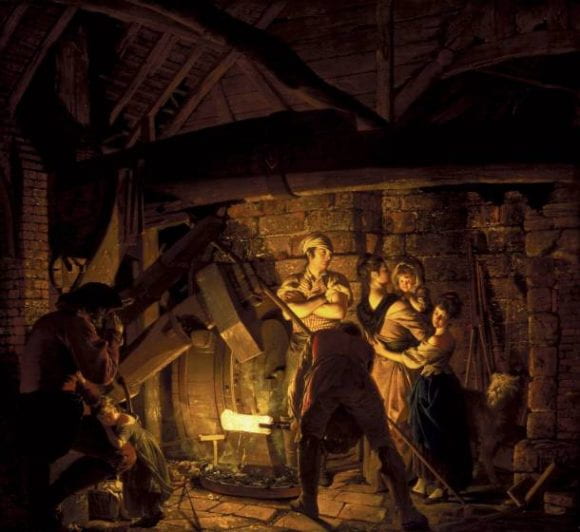
An Iron Forge 1772 Joseph Wright of Derby, Tate Gallery
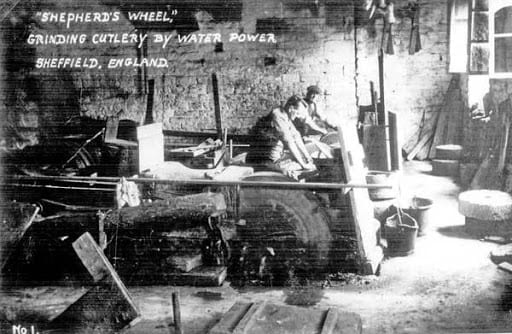
Historical view of Shepherd Wheel workshop
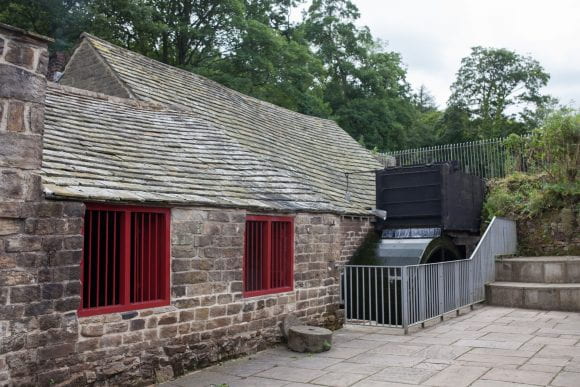
Shepperd Wheel is another Sheffield Industrial Museum site. There has been a water wheel at this site since 1584. Sheffield became well known as a cutlery manufacturing center from the 17th century. Before its industrial scale steel industry, the city and surrounding villages had many small cutlery workshops with water driven grinding stones.
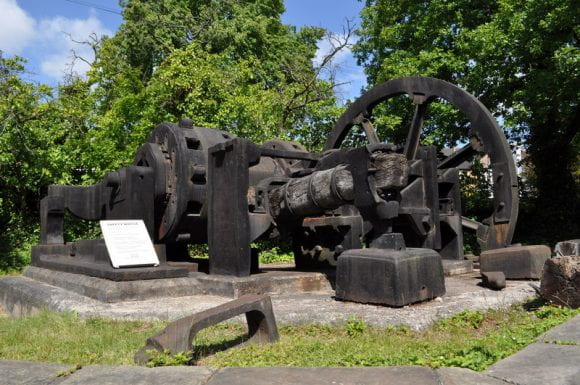
Jessop tilt hammer
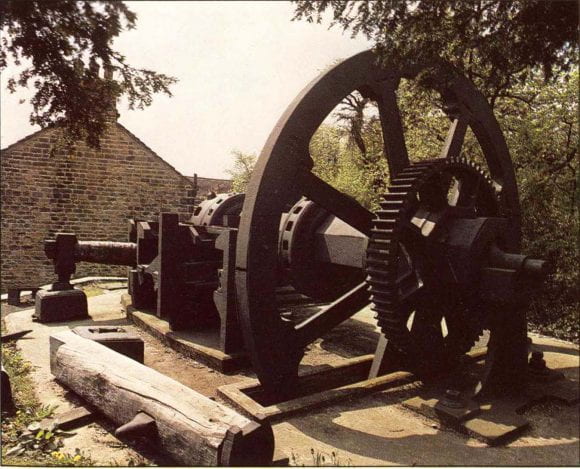
The Jessop tilt hammer was made in 1811.